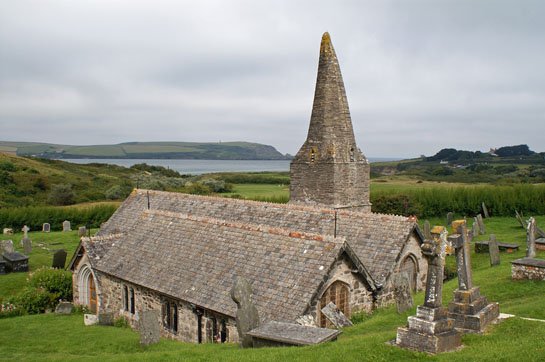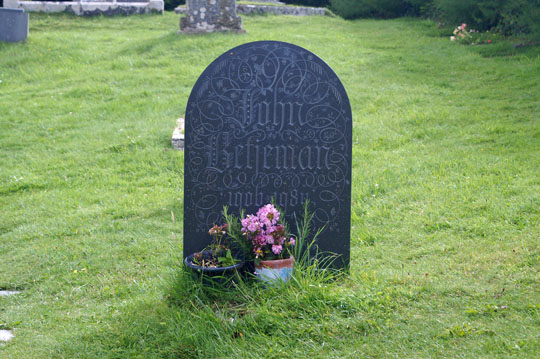|
|
||||||||||||||||||||||||||||||||||||||||||||||||||||||||||
|
Please sign my Guestbook and leave feedback |
||||||||||||||||||||||||||||||||||||||||||||||||||||||||||
|
Recent Additions |
||||||||||||||||||||||||||||||||||||||||||||||||||||||||||
|
|
||||||||||||||||||||||
|
The bulk of the church was built in 1430. it comprises a nave, a chancel, a short south aisle and a tower, the base of which forms a tiny transept.However, some parts of the church clearly pre-date 1430, although strangely many accounts of the church overlook this. The crude round-topped tower arch and the tower’s deeply-splayed window are clearly Norman. There is also a Norman font. Simon Jenkins refers to the church’s “Victorianised Norman interior”. I think it is possible that the nave was indeed originally Norman, but I am far from convinced about the aisle and its arcade. This is a remote church and has no great claim to fame other than its Betjeman associations. We should not, perhaps, be too surprised if its architectural evolution is not well-documented. In any event, this is a church to enjoy rather than to study! |
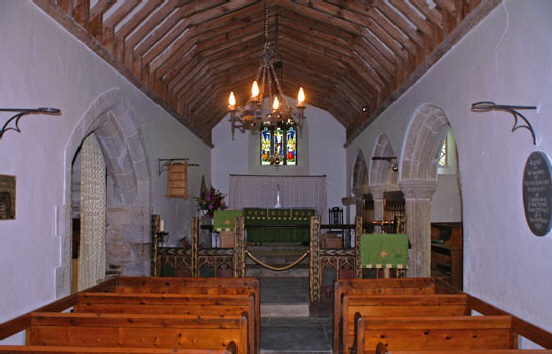 |
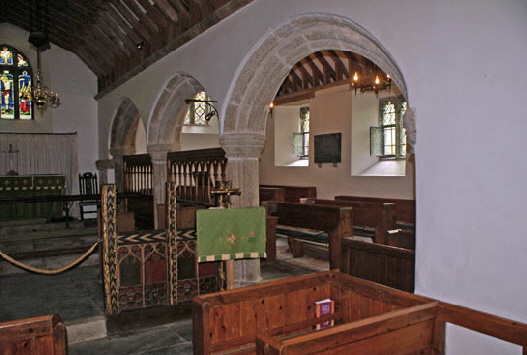 |
||||||||||
|
Left: The nave with the south aisle arcade to the right. Right: The south aisle. |
|||||||||||
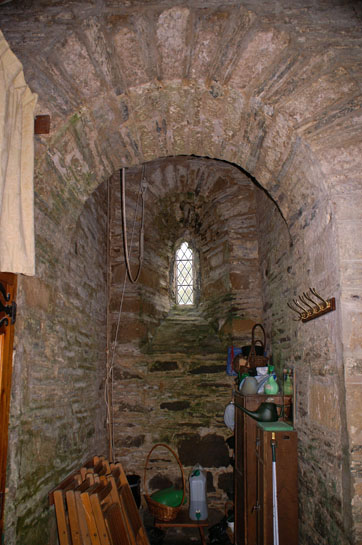 |
|||||||||||
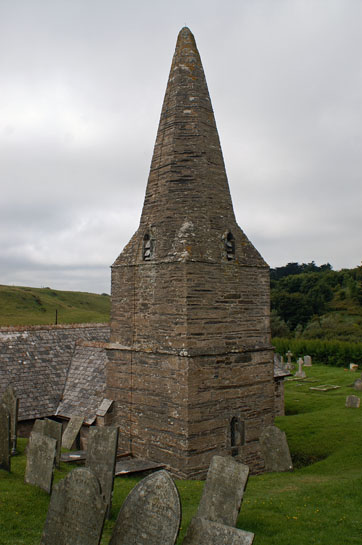 |
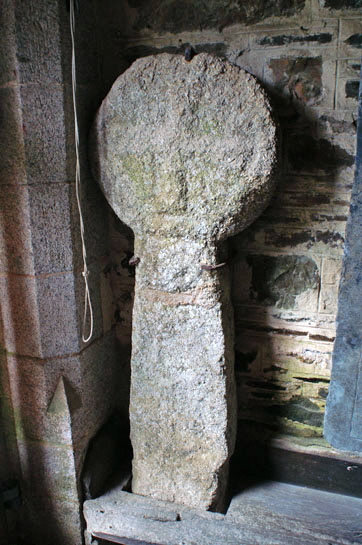 |
||||||||||
|
Left: Surely a Norman tower arch and window - even if the shape of the window itself seems to have been altered? There is a sense of quintessential English eccentricity about this scene. Centre: The tower. The spire looks more recent and is believed to have been added later. Right: A little puzzle here. This is a very old and Celtic-looking cross (and let’s not forget Cornwall is a Celtic land). Where did this come from? |
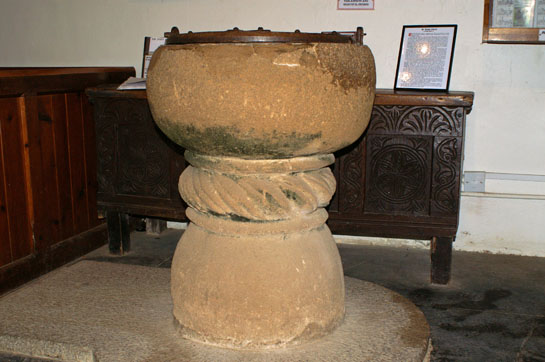 |
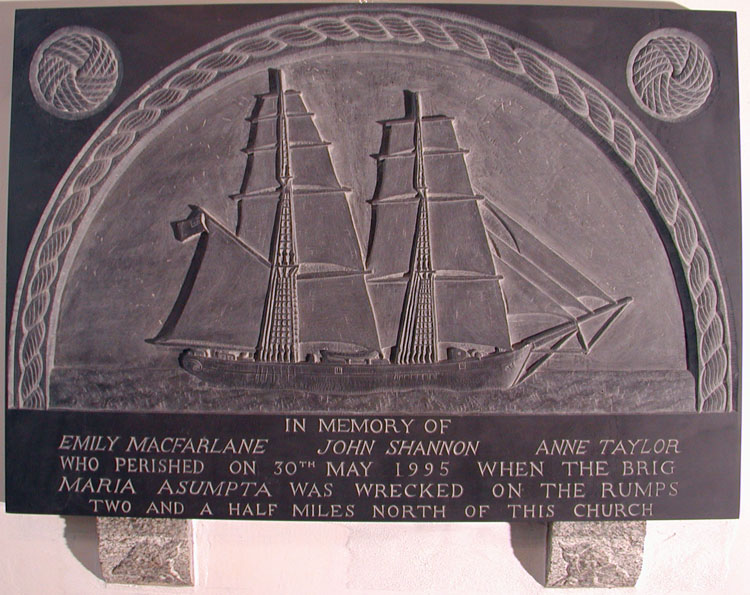 |
||
|
Left: The simple c12 font with cable moulding around its base. Right: Churches have not lost their role in recording for posterity life’s tragedies. This plaque is to the three crew members of the brig “Maria Asumpta” who died when it hit submerged rocks at Rump Point in 1995. The skipper was found guilty of manslaughter due to negligence and was gaoled for 18 months. |
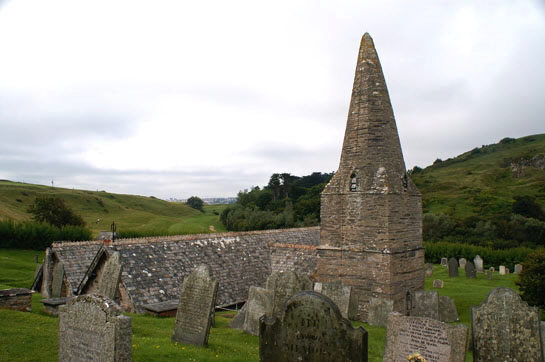 |
|||
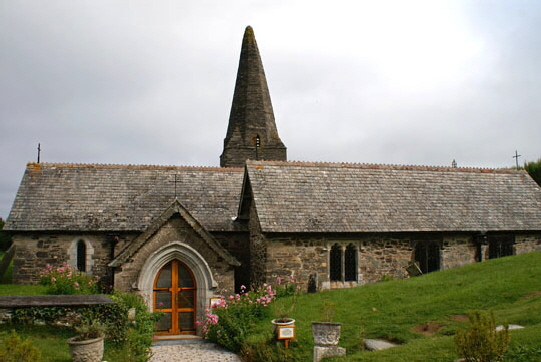 |
|||
|
Left: The south door of the church. Note the south aisle was added only to the east of the doorway. Right: The church from the north east with the sea in the background. Because the tower is to the side of the church and because the south aisle runs only part of the way along the church is is not obvious at first glance which is the west and which is the east end of this church. |
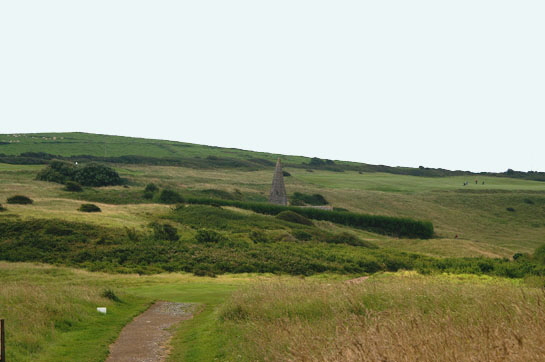 |
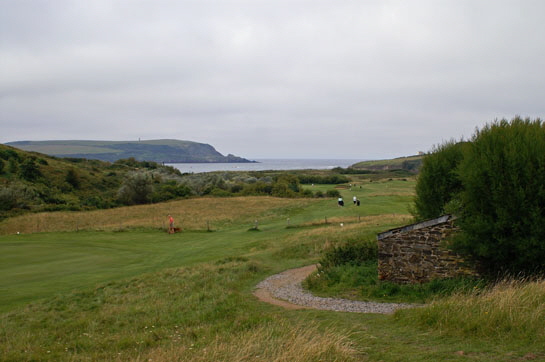 |
|
Left: The stumpy tower seems almost to be buried in the ground as you approach it from the golf course. Right: Looking across the golf course to the sea. |
|
|
|
The Maria Asumpta Incident |
|
St Enodoc was one of the batch of churches I wrote about for this website. Shortly afterwards I was contacted Philip Chatfield who is the sculptor of the “MARIA ASUMPTA” memorial (above). He very kindly provided the photograph (which was considerably better than my own!) and also the one below that he took whilst he was actually carving it. Remarkably, Philip was on board the ship when it sank. Philip explained to me that: “As regards Maria Asumpta, she was the loveliest of all the ships I have sailed. I spent five years with that ship and knew every part of her. Her loss grieves me still, but she had a destiny of her own. Built in Badalona, near Barcelona in 1858, her maiden voyage was to Buenos Aires carrying textiles. She was a very elderly Lady in 1995 but was lovely to sail, and work aloft. She was of a different era, and we sailed her in the old traditional way. However, she was lost and three crew went with her. I knew them and it was my wish, and of the Friends of MARIA ASUMPTA, to create some form of lasting memorial to go in the church nearest the wreck site” “I was the sculptor who designed and carved and fixed into position the slate memorial to the Brig MARIA ASUMPTA which is in the church. This was done eleven years after the wreck which happened in 1995. I was one of the 11 survivors and first to leave the ship that fateful day. I still carry some injuries, thankfully minor, from the shipwreck. I was told that the memorial is unique to Cornwall, being carved by a 'survivor' of a shipwreck.” “Lastly, I had to create something which was fitting for a 'memorial' and also for it to sit happily within the Sacred Space that is St Enodoc, along with the John Betjeman connections. As I frequently work with Abbeys and churches I think I was a more acceptable proposition as a sculptor than could have been.” I am a bit of a Betjeman fan myself and, of course, he was famous for his love of the English parish church. I am sure he would have approved of the memorial being sited at his beloved St Enodoc. Philip Chatfield was also responsible for, amongst other things, the Lord Nelson memorial stone aboard HMS Victory, carved from Spanish marble from Cape Trafalgar. |
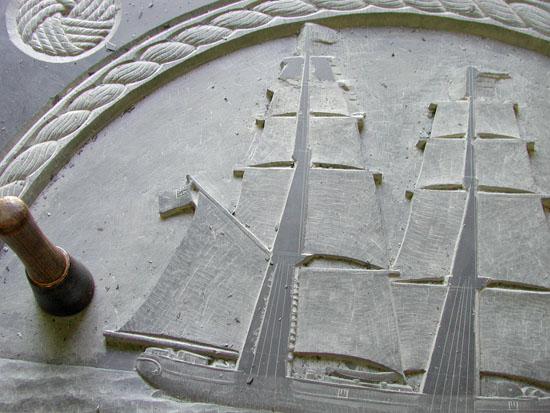 |
||||||
|
Footnote |
||||||
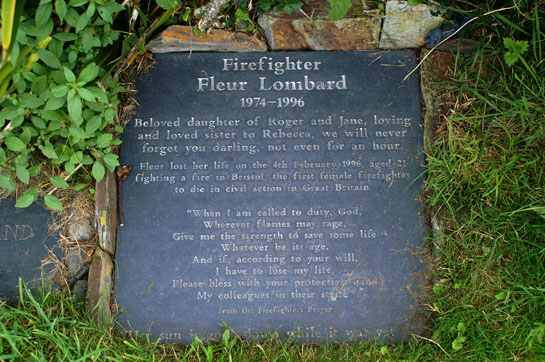 |
||||||
|
I spotted this in St Enodoc churchyard and lingered awhile thinking about the pride and sense of loss in this epitaph. I came to see Betjeman’s grave but this one moved me more. Betjeman would have understood that. RIP, Fleur Lombard. |
||||||
|
|
||||||
